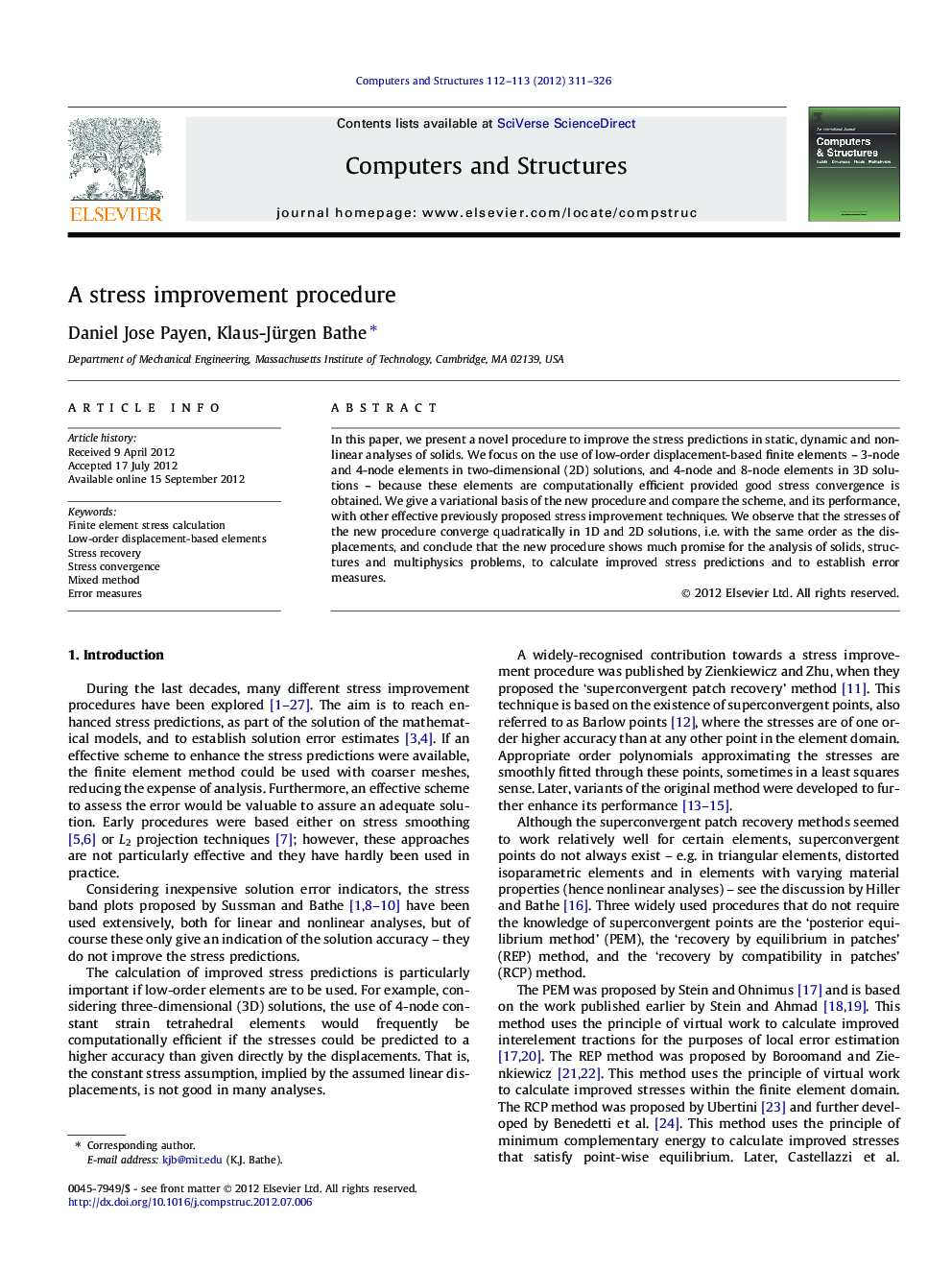| Article ID | Journal | Published Year | Pages | File Type |
|---|---|---|---|---|
| 511294 | Computers & Structures | 2012 | 16 Pages |
In this paper, we present a novel procedure to improve the stress predictions in static, dynamic and nonlinear analyses of solids. We focus on the use of low-order displacement-based finite elements – 3-node and 4-node elements in two-dimensional (2D) solutions, and 4-node and 8-node elements in 3D solutions – because these elements are computationally efficient provided good stress convergence is obtained. We give a variational basis of the new procedure and compare the scheme, and its performance, with other effective previously proposed stress improvement techniques. We observe that the stresses of the new procedure converge quadratically in 1D and 2D solutions, i.e. with the same order as the displacements, and conclude that the new procedure shows much promise for the analysis of solids, structures and multiphysics problems, to calculate improved stress predictions and to establish error measures.
► Novel stress improvement procedure is given for static, dynamic and nonlinear analysis of solids. ► Focus is on the use of low-order elements. ► Quadratic convergence is observed for the improved stresses. ► Method is compared with existing techniques.
